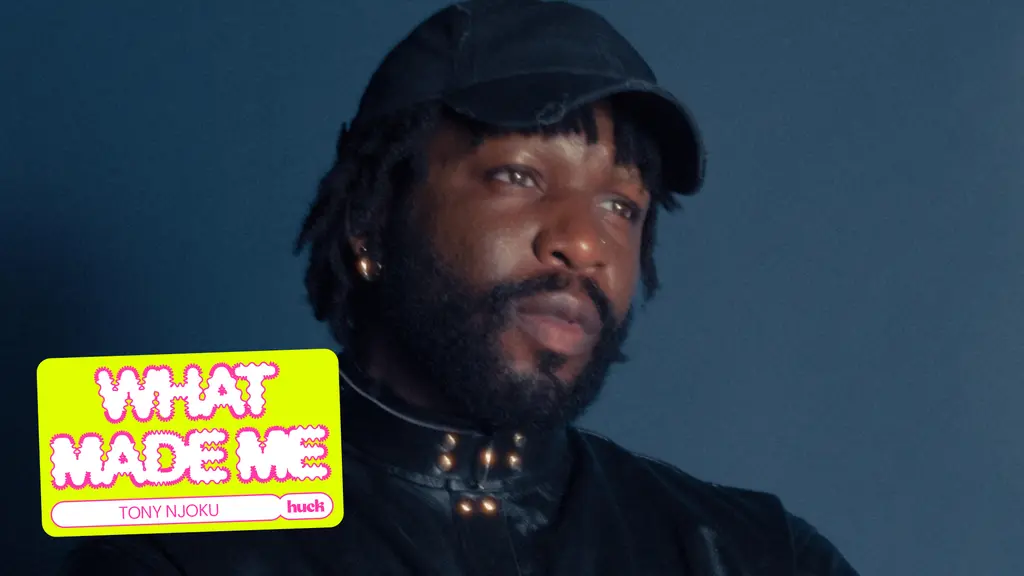This new photobook celebrates the long history of queer photography
- Text by Miss Rosen
- Photography by Thames & Hudson (Courtesy of)

Calling the Shots — Curated by Zorian Clayton, it features the work of several groundbreaking artists including Robert Mapplethorpe, Sunil Gupta, Zanele Muholi and more.
For hundreds of years, queer history has been hidden in plain sight, its artists casting their gazes in a myriad of ways, encoded in our constructs of beauty, desire, status, and wealth. Photography’s arrival in 1839 signalled a remarkable shift, placing the power of image-making in the hands of the people rather than the establishment. For those driven to create, visibility quickly became an act of resistance against misrepresentation, marginalisation, and erasure.
Thinking about questions like “how do we find queer community?” and “how do we find our history?” Zorian Clayton, Curator of Prints at London’s Victoria and Albert Museum, delved into the collection to create Calling the Shots: A Queer History of Photography (Thames & Hudson). Taking the words of photographer Catherine Opie as its departure point – “I will wave a rainbow flag proudly, but I am not a single identity” – Calling the Shots is a nod to inclusivity in its many-splendored forms.
Drawn from the monumental photography collection at the V&A, the book features a wealth of works made by and about LGBTQIA+ communities worldwide. Organised across six thematic chapters (Icons, Staged, Body, Liberty, Making a Scene, and Beyond the Frame), Calling the Shots explores the intersections of photography, identity, image making, and activism in the work of groundbreaking artists including Robert Mapplethorpe, Zanele Muholi, Liz Johnson Artur, Sunil Gupta, Mariette Pathy Allen, and Leonard Fink.


From the very beginning, photography offered freedom and escape from an oppressive society. Pointing to the work of Anne Brigman, the only woman in the Pictorialist Movement at the turn of the 19th century, Clayton says: “There were all these men going on photographic expeditions and taking along people to carry their huge amounts of kit, and she was just doing it all by herself, with a couple of women friends. They went deep out into the California hills and took photographs of each other, naked in the beautiful surroundings, and there’s a lot of queer joy and beauty in those photos.”
In the years before Stonewall, vernacular photography became the lingua franca of the queer underground, its endless DIY applications providing a readily accessible workaround homophobic and transphobic laws. While many of the photographers and subjects have been lost to time, what remains is a glimpse of love, pleasure, and pride.
With the Gay Liberation Movement of the ’70s dovetailing with photography’s arrival into the realms of fine art, queer iconography became a defining voice of the new millennium. “As people start to open up their lives, homes, bars, clubs, and communities, we start to really see inside queer spaces and the meaning of that,” says Clayton.
But as the rising tide of the far right consumes the Global North, the lessons of the past are ever more resonant today. “We need unity in order to weather this storm, and I absolutely believe it is possible,” Clayton says.
“When you look back in history, things like Section 28 and the Thatcher years galvanised the community in the best possible way,” he continues. “When you look back at the work made during the AIDS crisis, it is phenomenal and beyond whatever would have been created if it wasn’t for the situation. Even though there’s so much grief, loss, and trouble around that, we prevailed. We’ve done it before. We can do it again.”
Calling the Shots: A Queer History of Photography is published by Thames & Hudson.
Follow Miss Rosen on X.
Buy your copy of Huck 81 here.
Enjoyed this article? Follow Huck on Instagram.
Support stories like this by becoming a member of Club Huck.
You might like

Largest-Ever Display of UK AIDS Memorial Quilt Opens at Tate Modern
Grief Made Visible — Comprising hundreds of panels made by lovers, friends and chosen family, the UK AIDS Memorial Quilt returns in full for the first time since 1994 – a testament to grief, friendship and the ongoing fight against HIV stigma.
Written by: Ella Glossop

In Medellín’s alleys and side streets, football’s founding spirit shines
Street Spirit — Granted two weeks of unfettered access, photographer Tom Ringsby captures the warmth and DIY essence of the Colombian city’s grassroots street football scene.
Written by: Isaac Muk

On Alexander Skarsgård’s trousers, The Rehearsal, and the importance of weirdos
Freaks and Finances — In the May edition of our monthly culture newsletter, columnist Emma Garland reflects on the Swedish actor’s Cannes look, Nathan Fielder’s wild ambition, and Jafaican.
Written by: Emma Garland

Tony Njoku: ‘I wanted to see Black artists living my dream’
What Made Me — In this series, we ask artists and rebels about the forces and experiences that shaped who they are. Today, it’s avant-garde electronic and classical music hybridist Tony Njoku.
Written by: Tony Njoku

Dalia Al-Dujaili: “When you’re placeless, nature can fill the void”
Babylon, Albion — As her new book publishes, the British-Iraqi author speaks about connecting with the land as a second-generation migrant, plants as symbols of resistance, and being proud of her parents.
Written by: Zahra Onsori

We are all Mia Khalifa
How humour, therapy and community help Huck's latest cover star control her narrative.
Written by: Alya Mooro








